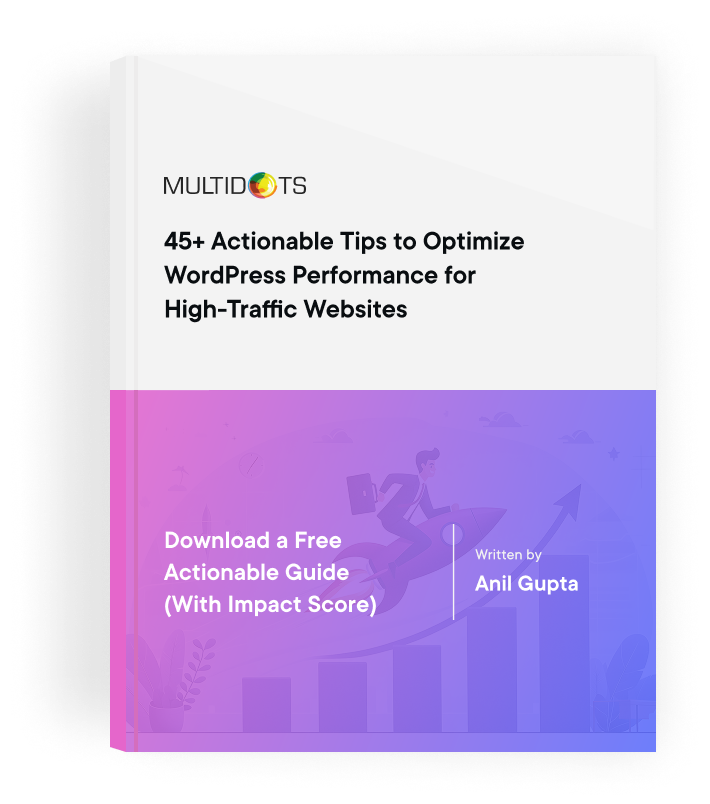A Comprehensive Guide to AEM Cloud Service Architecture
Gain insights into AEM Cloud Service architecture with this comprehensive guide to optimize your enterprise solutions

Table of Contents
Ever tried scaling an enterprise CMS, only to run face-first into a brick wall of complexity, ballooning costs, and mounting technical debt?
Welcome to the Adobe Experience Manager (AEM) challenge.
Tech leads everywhere are feeling it. What starts as a sleek solution for managing digital content quickly turns into a sprawling beast as your presence grows, and suddenly, you're knee-deep in custom workflows, fragile integrations, and budget blowouts.
Sound familiar? You're in good company.
On-prem AEM might flex some serious power, but it comes with baggage. You’ve got the threat of peak traffic bottlenecks. Whilst off-peak you could find yourself paying to keep idle infrastructure humming like it’s Black Friday 24/7.
It’s a high-investment setup that’s difficult to scale efficiently, and often ends up draining resources you could be using to actually innovate. And yes, there is a smarter way forward.
In this guide, we’ll run you through how to
- Master AEM’s core architecture.
- Pick the right deployment pattern based on your performance and scaling needs.
- Get clear on the key differences between on-prem AEM and AEM as a Cloud Service.
- Embrace microservices to unlock better scalability and fault tolerance.
- Modernize your development for faster, more secure builds.
- Sidestep the common pitfalls of AEMaaCS implementations.
Let’s get started!
AEM Architecture: A Basic Overview
At its core, AEM runs on a trio of powerhouse technologies, and if you’re architecting with AEM, mastering these isn’t optional. It’s essential:
1. Java Content Repository (JCR)
This is AEM’s storage backbone. JCR (built on the JSR-283 spec) gives you a hierarchical way to manage both structured and unstructured content. Meaning your web pages, images, and assets all live in one unified, queryable place.
2. OSGi Framework
Think of OSGi as AEM’s brain for modularity. It powers hot-deployments, handles dependency injection, and keeps your services running smoothly with lifecycle management. In short: It makes AEM flexible and maintainable instead of monolithic and messy.
3. Apache Sling
This is where the magic of delivery happens. Sling maps HTTP requests to JCR resources using a RESTful, resource-first model. It figures out how content should be rendered based on the request path, keeping content delivery fast, smart, and adaptable.
These foundational technologies drive how AEM’s architectural tiers orchestrate the content lifecycle from creation to delivery. Here’s how it works:
Common AEM Deployment Patterns
If you want better performance, stronger reliability, and fewer late-night firefights, it all starts with choosing the right AEM deployment pattern.
Here’s the rundown of what seasoned AEM architects actually use:
TarMK (Tar Micro Kernel) Deployment
The go-to default. Single author + single publish = simple, efficient, and perfect for sites where high availability isn’t a dealbreaker.
TarMK Farm
One author, multiple publish instances behind a load balancer. Ideal for scaling delivery and adding fault tolerance without blowing up your architecture.
TarMK Cluster with Cold Standby
Same as above, but with a backup author ready to go if your primary fails. It’s your built-in safety net for minimizing downtime.
MongoMK Cluster
Need high availability and concurrent authoring? This pattern hooks multiple author instances into a shared MongoDB backend. More authors, more uptime, less chaos.
Choosing the right pattern = lower costs, faster sites, and way fewer headaches. Teams that tailor their AEM architecture to fit their actual needs often see faster page load times and savings on infrastructure spend.
Smart setup, big payoff.
AEM as a Cloud Service Architectural Differences
The evolution from traditional on-premise AEM architecture to AEMaaCS represents a significant paradigm shift in content management approaches. Transitioning from traditional on-premise setups to AEMaaCS brings significant architectural differences, revolutionizing how enterprises manage and deliver content.
AEM Cloud Service Architecture Diagram - showing microservices, containerization, and CI/CD pipeline
Key differences in the AEM Cloud Service architecture include:
- Automatic Updates: Under AEMaaCS architecture, automatic updates are in place through integration and continuous delivery (CI/CD) pipelines. This ensures that the software is always up to date, with new feature releases occurring monthly and maintenance updates, including important security patches, deployed daily.That means no more manual upgrade marathons, saving teams hundreds of hours of dev time every time a major version rolls out.
- Authentication: AEMaaCS architecture simplifies authentication by pre-configuring Adobe Identity Management System (IMS), which uses the OAuth protocol. This authentication process enhances security and user management capabilities.
- Publication Process: Content delivery in AEMaaCS architecture is facilitated through Apache Sling, providing a framework for efficient content distribution to the public. This guarantees excellent performance and dependability when delivering digital experiences to users.
- Development Environment: Developers' workflows are revamped in AEMaaCS architecture, with restricted access to CRX/DE and read-only access to the Open Service Gateway Initiative (OSGi) console. Application code and configurations are managed within the Git code repository of the associated Cloud Manager program, emphasizing collaboration and version control.
The AEM Cloud Service architecture also introduces improvements in:
- Operations and Performance: AEMaaCS architecture introduces automated maintenance tasks, such as indexing and backups, reducing manual intervention and enhancing operational efficiency. The architecture incorporates health checks to monitor node health, swiftly replacing unhealthy nodes to maintain service availability. This automation wipes out hours of weekly maintenance grunt work – the kind you'd normally juggle with on-prem setups. A massive boost to operational efficiency.
- Scalability: Unlike traditional AEM architecture setups, AEMaaCS architecture offers functionally infinite scalability across author, publisher, and dispatcher tiers, ensuring effortless expansion to accommodate evolving business needs and growing digital footprints.
<span style="color:green;">This elastic scaling allows enterprises to handle traffic spikes during peak seasons without maintaining over-provisioned infrastructure year-round, resulting in potential cost savings of 25-40% compared to traditional deployments.</span> - AEM Sites: While retaining core functions, AEMaaCS architecture introduces new features like asynchronous page operations and a revamped AEM reference site. Along with this, a clear separation of the AEM repository into mutable and immutable code enhances agility and maintainability.
The Microservices Advantage in AEMaaCS
AEM (AEMaaCS) is a full-on architectural leap that transforms the traditional monolithic architecture into containerized microservices. This enables dynamic scaling, improved flexibility, and better resource utilization.
Here’s what this shift unlocks:
1. Independent Scaling
Each service scales on its own terms – no more over-provisioning just to keep one part of the system afloat.
2. Built-In Resilience
If one service fails, it won’t take the whole system with it. Isolated components keep everything else running smoothly.
3. Continuous Deployment
Push updates to individual services without taking the whole system offline. More releases, less risk.
4. Smarter Resource Usage
Resources are dynamically allocated where and when they’re needed—no more paying for idle capacity.
For AEM pros, mastering this model can be a fast track to the top. Architects who lead successful AEMaaCS rollouts often level up into senior roles, and many earn the coveted Adobe AEM Champion badge, boosting their earning potential compared to traditional AEM devs.
Key AEM as a Cloud Service Architecture Features
AEM has several integral tiers, each serving a purpose in the content lifecycle:
AEM Architecture | experienceleague.adobe.com
The core layers of traditional AEM architecture include:
- Author Tier: At the core of the AEM architecture, the Author tier is where content creation and management take place. This is where web pages are crafted, updated, and enriched with media content. Content authors and editors use intuitive interfaces to develop and maintain digital experiences.
- Preview Tier: Before content goes live, it undergoes thorough scrutiny in the Preview tier. Here, content creators and stakeholders review and validate the content's appearance and function to ensure a flawless user experience. The Preview tier acts as a staging environment, showing how content will appear once published.
- Publisher Tier: The Publisher tier is the public-facing aspect of the AEM architecture, where all published content
<span style="color:red;">is</span>resides. It is the gateway through which end-users access the finalized web content. The Publisher tier ensures that content is efficiently delivered to audiences across various channels and devices. - Dispatcher Tier: The Dispatcher focuses on optimizing web performance and enhancing user experience. It helps manage incoming requests efficiently and direct them to appropriate servers. Key tasks the Dispatcher performs include:
- Caching frequently accessed content to expedite delivery
- Load balancing to evenly distribute network traffic
- Preventing server overload and ensuring great performance
- Acting as a security layer for the AEM architecture
Using this structure, the AEM Cloud Service architecture delivers several innovative features that address enterprise content management challenges:
- DevOps With Cloud Manager: Cloud Manager gives businesses scalable DevOps capabilities, offering autoscaling, flexible deployment modes, and streamlined management of AEM environments. By tightly integrating development and operations, teams can accelerate deployment cycles. That means faster launches, quicker iterations, and a serious edge in delivering digital experiences.
- Application Automation: Developers can use automation capabilities to streamline repetitive tasks, enhancing productivity and accelerating development cycles.
- Built-in CDN: AEMaaCS architecture incorporates a built-in Content Delivery Network (CDN), ensuring rapid and efficient content delivery, even at scale, to enhance user experiences globally. The built-in CDN cuts out the need for third-party contracts and custom configs, simplifying your stack while boosting global performance for international users.
- Dynamic Architecture: By abstracting infrastructure concerns and enabling autoscaling, AEMaaCS has a dynamic architecture that adapts to fluctuating workloads and evolving business demands.
- Automated Testing: Integrated automated testing capabilities scan for common vulnerabilities, ensuring proactive threat detection and mitigation to bolster security posture and reduce risks.
- Adobe Integration: AEMaaCS architecture integrates with other Adobe tools, including analytics and marketing products, enabling holistic digital experience management and optimization.
Sling Models and HTL: The Modern AEM Development Stack
Along with being better for ops, AEMaaCS seriously levels up the developer experience. With key upgrades to the dev stack, teams can build faster, cleaner, and more securely.
Sling Models
This annotation-based framework makes mapping JCR resources to Java POJOs a breeze. Cleaner code, easier maintenance, and big cuts in component dev time.
HTML Template Language (HTL)
HTL replaces the old-school JSP approach with a templating system that’s simpler, safer, and smarter. It keeps logic out of markup, improves readability, and slashes template-related security issues.
Bottom line? AEMaaCS lets devs spend less time wrestling code—and more time shipping features.
[Diagram showing Sling Models and HTL interaction in the AEM architecture]
Teams that embrace these modern patterns see significantly faster dev cycles and dramatically lower technical debt, making these skills a fast track for AEM pros aiming to level up into architect or tech lead roles.
Despite these advantages, organizations implementing AEM Cloud Service architecture should be aware of several challenges:
Common Challenges With AEM as a Cloud Service Architecture
But, despite the numerous benefits offered by AEMaaCS architecture, certain challenges have been found, both inherited from traditional AEM deployments and newly introduced:
- Security Challenge: While the cloud architecture offers scalability and flexibility, it also introduces security concerns that should be addressed immediately. Protecting sensitive data and ensuring compliance with industry regulations remain top priorities for enterprises using AEMaaCS. Organizations that bake in strong security from the start of their AEMaaCS rollout typically avoid the kind of breaches that can cost up to $4.88 million per incident for the largest companies.
- Integration Challenge: Integrating the AEM architecture with existing systems and third-party applications can be complicated and requires meticulous planning. Thorough and careful integration is important for optimizing workflows and delivering cohesive experiences across channels.
- Learning Curve Challenge: The AEM architecture, whether on-premise or as a cloud service, can be quite complicated to learn. Understanding its intricate features and workflows requires time and effort, potentially hindering rapid adoption and efficiency.
- Reliance on Developers Challenge: Due to the AEM architecture's complexity, many teams rely heavily on developers for content updates and modifications. This dependency on technical expertise can lead to bottlenecks and hinder agility in content management processes.
- Limited Customization Challenge: While the AEM architecture offers customization capabilities, the platform imposes limitations, especially compared to open-source alternatives. Enterprises may be constrained in achieving highly tailored solutions to meet their specific requirements.
Overcoming AEMaaCS Implementation Challenges
Scaling AEMaaCS isn't without its curveballs, but the pros know how to stay ahead of them. Here’s what successful AEM architects do differently:
1. Strategic Architectural Planning
They don’t wing it. They map existing components to cloud-native patterns before migration ever starts.
2. Repository Restructuring
They follow the mutable/immutable separation model to fully align with AEM Cloud Service architecture – no legacy baggage allowed.
3. CI/CD Pipelines That Work Hard
They build strong pipelines with automated testing baked in, so quality and compliance aren’t left to chance.
4. Dispatcher Config Optimization
They fine-tune dispatcher configs for cloud – tight caching, tight security, no performance leaks.
The result? Organizations that follow this playbook see faster time-to-value and lower TCO compared to teams that go in without architectural guardrails.
An Alternative to AEM Architecture: WordPress
For organizations finding the AEM architecture too complex or costly, WordPress offers a compelling alternative with various advantages:
Looking for an alternative? WordPress is a popular option, offering several advantages:
- Integration Capabilities: WordPress is an open-source platform with extensive integration capabilities. It enables interoperability with various systems and applications. Its flexibility allows enterprises to create cohesive digital ecosystems tailored to their needs.
- Market Dominance: WordPress dominates the CMS market. While the AEM architecture only has a 5.3% share of the top 1,000 sites, WordPress has a staggering 46.7%. Its widespread adoption attests to its versatility and suitability for enterprise-level organizations seeking scalable and reliable content management solutions.
- User-Friendly Interface: WordPress prioritizes user experience, providing an intuitive interface that allows content creators to easily author and publish content without extensive technical expertise. This democratization of content management enhances efficiency and agility within organizations.
- Extensive Customization: WordPress offers customization options unlike any other, allowing businesses to tailor their digital experiences to align with brand identity and unique requirements. Its vast ecosystem of themes and plugins facilitates rapid development and customization, fostering innovation and differentiation.
- Robust Community Support: With a vast community of developers and enthusiasts, WordPress offers support and resources not seen elsewhere. Businesses can benefit from ongoing updates, security patches, and knowledge-sharing opportunities to ensure long-term stability and resilience.
Migration from AEM to WordPress can be tough, but with the help of professionals, you can have your site ready in no time!
Take the Next Step With Multidots' Expertise
As we've seen, AEMaaCS architecture can be an effective way to manage your content. However, it's equally important to recognize that WordPress offers the same strengths and has its own advantages.
Multidots, a web development agency and WordPress VIP Gold Partner, is known for its expertise in enterprise migrations. We can help you take the next step to using WordPress's full power.
Multidots is unmatched in its ability to create enterprise-level websites on WordPress. We provide scalability and flexibility to enhance your site's functions. Our managed migration service guarantees a smooth transition for businesses wanting to switch to WordPress, removing any concerns about losing data or experiencing operational interruptions.Start embracing WordPress's benefits over the AEM architecture today and unlock new possibilities for your business. Get in touch with Multidots and discover the potential of WordPress!
Feel free to schedule a quick call with our migration expert.
Contact Us
